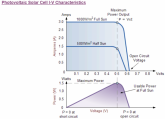I did a pretty exhaustive design assessment of going "Victron" but you'll still need a BMS for cell balancing since there is no Victron product for doing that. Great if you have BB batts but if you have a DIY LFP bank, you'll stll need something like SBMS. What tipped me completely away from a Victron-centered solution is that, plus the non-MPPT assessment in my previous post. SBMS, in fact, provides all the other monitoring and charge/load control features using just one product that Victon does but requires multiple products to accomplish. As a result, it's much cheaper, takes up less space and overhead amps, and has just the features I need and nothing more (simpler to configure and maintain).My knee-jerk reaction to using victron charge controllers with the electrodacus system is "why bother?" Once you start mixing the architectures, it is not as clear to me what the advantage is.
About the only thing you miss out on is VRM World which is pretty cool and the Venus GX animated displays. I'll have an LTE router in my rig so looking at how I can get Dacian's remote monitoring screens accessible from the internet. Less "wow" than Victron's displays but really there isn't any data Victron reports that SBMS doesn't as well.
And, as has been mentioned a few times above, you CAN use MPPT chargers (e.g. Victron) with SBMS0 as long as they have remote on/off switching. It just didn't make sense for me, but I can always swap out the DSSRs w MPPT(s) down the road if I come to a different conclusion after I get some time under my belt with all this.



